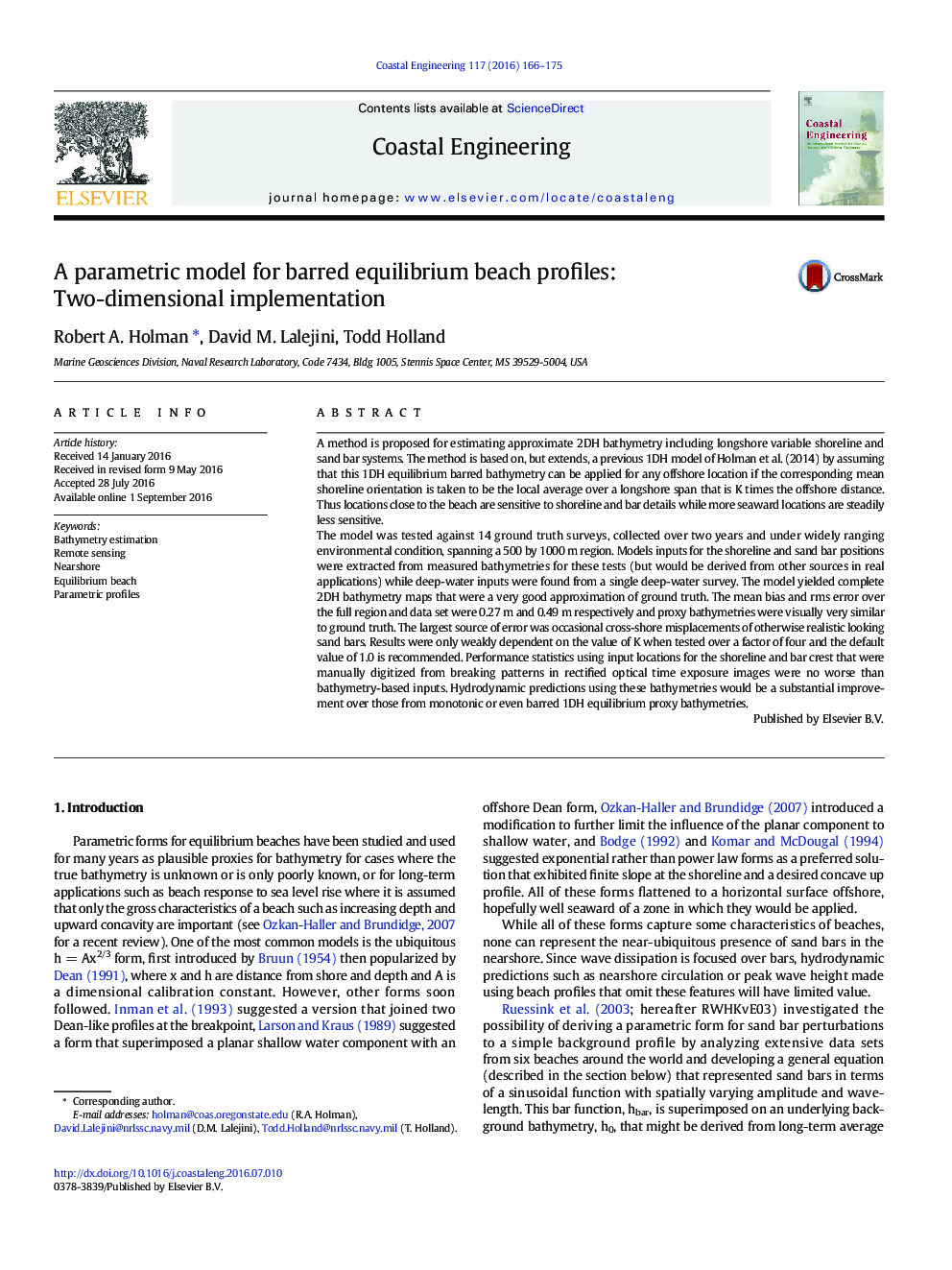| Article ID | Journal | Published Year | Pages | File Type |
|---|---|---|---|---|
| 8059629 | Coastal Engineering | 2016 | 10 Pages |
Abstract
The model was tested against 14 ground truth surveys, collected over two years and under widely ranging environmental condition, spanning a 500 by 1000Â m region. Models inputs for the shoreline and sand bar positions were extracted from measured bathymetries for these tests (but would be derived from other sources in real applications) while deep-water inputs were found from a single deep-water survey. The model yielded complete 2DH bathymetry maps that were a very good approximation of ground truth. The mean bias and rms error over the full region and data set were 0.27Â m and 0.49Â m respectively and proxy bathymetries were visually very similar to ground truth. The largest source of error was occasional cross-shore misplacements of otherwise realistic looking sand bars. Results were only weakly dependent on the value of K when tested over a factor of four and the default value of 1.0 is recommended. Performance statistics using input locations for the shoreline and bar crest that were manually digitized from breaking patterns in rectified optical time exposure images were no worse than bathymetry-based inputs. Hydrodynamic predictions using these bathymetries would be a substantial improvement over those from monotonic or even barred 1DH equilibrium proxy bathymetries.
Keywords
Related Topics
Physical Sciences and Engineering
Engineering
Ocean Engineering
Authors
Robert A. Holman, David M. Lalejini, Todd Holland,
